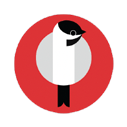
For maximum effectiveness, collision deterrent techniques and materials must strictly adhere to specifications provided in the City of Ottawa Bird-safe Design Guidelines, CSA A460, and Toronto Green Standard Version 3.0. Older resources may cite outdated criteria, and are offered here for information purposes only. Failure to meet current accepted standards — in fact any deviation from those standards — may result in unacceptable risk to birds. We do not recommend the use of UV-patterned glass, as many birds do not see UV light, and UV light levels are lowest at times when collision risk is highest (early in the morning).
Current standards and guidelines
- City of Ottawa Bird-safe Design Guidelines (2020)
- National Capital Commission Bird-Safe Design Guidelines (2021)
- CSA National Bird-Friendly Building Design Standard A460 (2019)
Public access requires set-up of a free account - Toronto Green Standard Version 3.0 (2019)
Light pollution
- Best Practices for Effective Lighting (Toronto 2017)
- Guidelines for Outdoor Lighting for Low-Impact Lighting (Royal Astronomical Society of Canada 2016)
Landscape design
Suppliers and installers
Other resources
- Ottawa Bird Strategy (2020)
- Bird Safe website
- Bird-Friendly Best Practices: Glass (Toronto 2016)
- Reducing Bird Collisions with Buildings And Building Glass Best Practices (U.S. Fish and Wildlife Service 2016)
- Critical examination of ABC’s campaign to avoid bird collisions (Swiss Ornithological Institute Sempach, Switzerland 2016)
- Vancouver Bird Strategy (2015)
- Bird-friendly Building Design Resource Guide (Port of Vancouver, WA, 2014)
- American Bird Conservancy
- Bird-Friendly Building with Glass and Light (Swiss Ornithological Institute Sempach, 2013)




